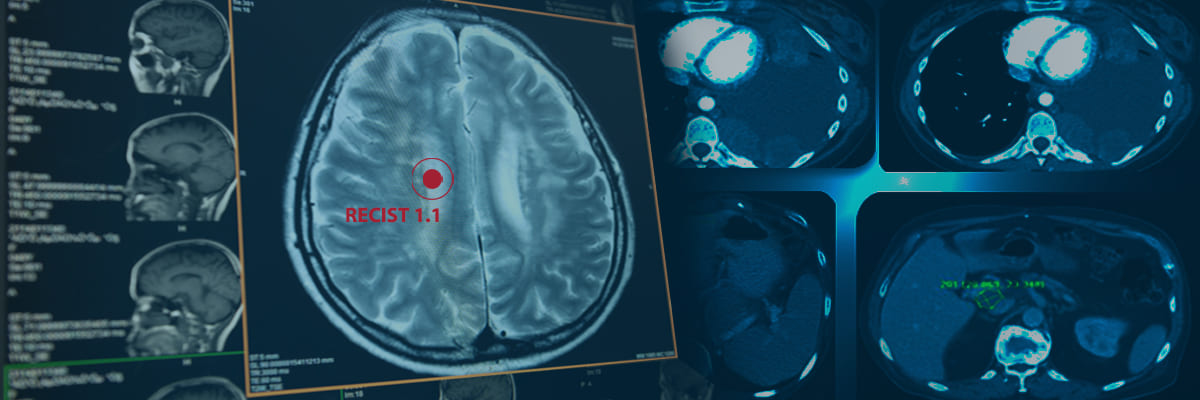ICL has over 8 years experience and expertise in providing scientific, interpretative, analytical and regulatory support to oncology trials on some of the latest pharmaceutical drugs and biomarkers with a seamless in-house technology platform and inherent flexibility to adapt to the needs of both local and international markets. Multiple oncology drug studies successfully conducted across a wide array of oncology indications such as breast cancer, lung cancer, head and neck cancer, colorectal cancer and lymphoma for all clinical trial phases.
Clinical research at Image Core Labs revolves around 3 basic core strengths which are basic science, technology support-innovation and translational research-cum-data analytics. ICL offers services ranging from protocol design and imaging charter development to imaging interpretations, timeline and overall endpoint assessments, support with regulatory submissions and full 21 CFR Part 11 compliance. ICL team has a pool of American Board certified, FRCR and Indian radiologists with vast onco-imaging experience, trained and abreast with the latest version guidelines and updates of the RECIST 1.1 criteria.
Apart from the modified RECIST(RECIST 1.1) criteria, the onco-radiologists at ICL are trained and experienced with other conventional and advanced tumor response criteria such as Cheson, EORTC, Lugano, MacDonald, PERCIST and Immune-related(IRRC) criteria. Our pool of expert Board-certified, subspecialty trained independent reviewers with vast experience in latest advancements in tumor response imaging, oncology biomarkers and molecular imaging expertise to review, adjudicate or validate imaging interpretations.
Determination of RECIST 1.1 specific oncology endpoints, customizable for assessment in isolation or in combination with other criteria such as IRRC, can be designed, customized and implemented on our own reporting platform Clinspa. Clinspa is also enabled with features for criteria specific auto-calculations, screen captures and image clipping to the reports to facilitate accurate comparative analysis. Semi-automatic, bi-dimensional and volumetric tumor burden assessments with customized lesion tracking and real-time accelerated calculations for accurate timepoint and endpoint assessments with the transfer of image analytics data to eCRFs.
Given the proliferation and divergence of imaging-based tumor burden assessments in oncologic clinical trials, adaptation and customization to the needs of the market can be compiled upon.
Our oncology aligned project management team specializes in trial timelines, metrics and quality assurance ensuring timely turnaround times and high quality of reports. A dedicated team for standardized site qualification and training across all sites also seamlessly handles data management.
RECIST 1.1
Summary of RECIST 1.1
A screening scan is performed at baseline – not more than 1 month before initiation of treatment. Subsequent treatment response is evaluated against the baseline scan or the subsequent visit showing the lowest disease burden(nadir). Measurable disease is defined as Target lesions at baseline with the longest diameter equal to greater than 10 mm for non-nodal lesions and equal to or greater than 15 mm for short axis diameters of nodal lesions.
Target lesions, amounting to a maximum of 5 may be chosen with a maximum of 2 lesions per organ. The sum of diameters of all target lesions is recorded at baseline and the same lesions are compared with on subsequent timelines. On subsequent assessments, the same lesions are measured along the longest axis in an axial plane, independent of axes or slice selection at baseline.
Bone lesions with a lytic component and a measurable soft tissue component equal to or greater than 10 mm can be chosen as a target lesion as well. Sclerotic bone lesions do not qualify as measurable target lesions. Cystic metastatic lesions can be target lesions although solid lesions are preferred. At subsequent assessments, complete disappearance of the lesion designates the measurement to 0 mm; however, if the lesion remains but too small to measure accurately, a default value of 5 mm is assigned. Merging of lesions results in the measurement of the longest axis of the merged mass on subsequent assessment, while splitting of lesions results in the sum of long axis measurements of each split component to be added.
A 20% or greater increase in the sum of diameters of target lesions from nadir amounts to disease progression. If the non-target disease burden / non-measurable disease increases unequivocally, irrespective of the target lesions, it can be designated progressive disease. Interval appearance of a new metastatic lesion at any timeline qualifies as disease progression. If the new lesion is indeterminate for neoplastic versus inflammatory etiology, followup scans are to be recommended. A confirmation for metastatic etiology at followup predates the disease progression to scan at which new lesion first appeared. A reappearing lesion after initial disappearance in a patient with a complete response is termed as disease progression. However, in a patient with stable disease or partial response, the overall response is determined by the change in the sum of diameters of target lesions. A decrease in the sum of target lesion burden of equal to or greater than 30% amounts to the partial response. Stable disease is the spectrum between partial response and progressive disease.
Complete response is the designated to the disappearance of all lesions and nodes regressing to measuring < 10 mm with normal tumor markers. PET-CT and/or MR when used, need to ensure consistency of the imaging protocol throughout the trial including contrast dosage, MR sequences, and planes.
Author: Dr. Jayadeepa S, Chief Scientific Officer at Image Core Labs
Tags: Clinical Imaging, Clinical Research, Onco-imaging, RECIST 1.0, RECIST 1.1

